Nissan Unveils All-New Electric Micra
- By MT Bureau
- May 22, 2025
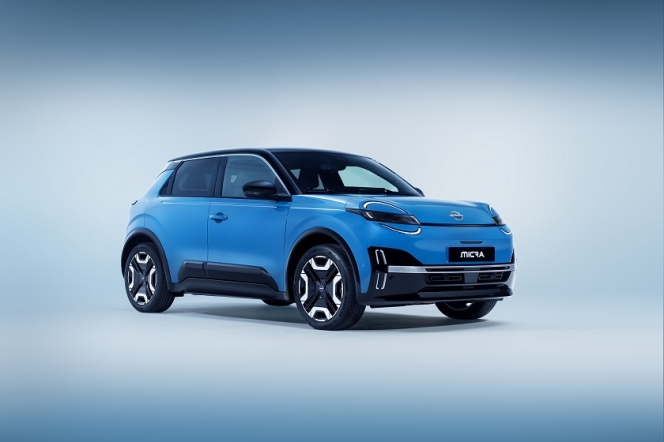
Japanese automaker Nissan has officially revealed the sixth-generation Micra, a fully electric, connected city car set to return to the B-segment in 2025. Designed at Nissan Design Europe in London, the Micra sports a fresh SUV-inspired look and will be the first of four new EVs Nissan plans to launch in Europe by 2027, alongside the new Leaf, Juke and an A-segment model.
Powered by a choice of two battery options – 40kWh and 52kWh – the Micra delivers up to 408km of claimed range. It features fast-charging capability, with a 100kW DC charger (80kW for the 40kWh variant) offering a 15-80 percent top-up in just 30 minutes. Vehicle-to-Load (V2L) technology allows the car to power external devices, from air pumps to camping gear.
Giovanny Arroba, Vice-President - Nissan Design Europe, said, “In designing the sixth generation of the all-new Micra, we’ve celebrated all of the values that have historically made it so popular – and opened a new chapter for Micra as an EV. The exterior has an audacious and playful appearance on first look, but has a stance which gives it a solid presence on the road. We’ve also been able to integrate delightful details into the design, which owners will love. We’re proud to have been able to bring the Micra into the EV age.”
Built on the AmpR EV platform, the MICRA weighs as little as 1,400kg and features a low-mounted battery pack and multi-link rear suspension – promising agile handling and class-leading ride comfort. A range of drive modes (Comfort, Sport, Eco and Perso) allows drivers to tailor performance and ambiance.
Inside, the Micra offers a minimalist yet premium interior with dual 10.1-inch displays, customisable ambient lighting and three upholstery trim choices: Modern, Audacious and Chill. A hidden Mount Fuji silhouette and tactile three-spoke steering wheel add thoughtful design flair.
Cliodhna Lyons, Region Vice-President, Product and Services Planning, Nissan AMIEO (Africa, Middle East, India, Europe & Oceania), said, “The all-new Micra combines irresistible and playful design, with intuitive tech and an EV powertrain which delivers both excellent range and fast-charging capability for an easy and enjoyable ownership experience. I’m confident that the all-new Micra will please both the head and the heart of buyers who are looking for an agile EV for their daily lives and longer trips.”
Connectivity is central to the new MICRA experience. Google built-in offers access to Maps, Assistant and Google Play, while in-car route planning considers real-time energy use and charging availability. Apple CarPlay and Android Auto are also standard.
On the safety front, the Micra is equipped with Nissan’s ProPilot Assist, Autonomous Emergency Braking, Blind Spot Intervention, Rear Cross Traffic Alert and more, ensuring a high standard of driver assistance technology.
| NISSAN MICRA | ||
| Battery capacity* | 40kWh* | 52kWh* |
| Max power | 90kW | 110kW |
| Max torque | 225Nm | 245Nm |
| Range | 310km | 408km |
| Weight | 1400kg | 1524kg |
| *All figures subject to homologation | ||
Ather Energy Introduces BaaS Model To Make E-Scooters Accessible
- By MT Bureau
- August 14, 2025
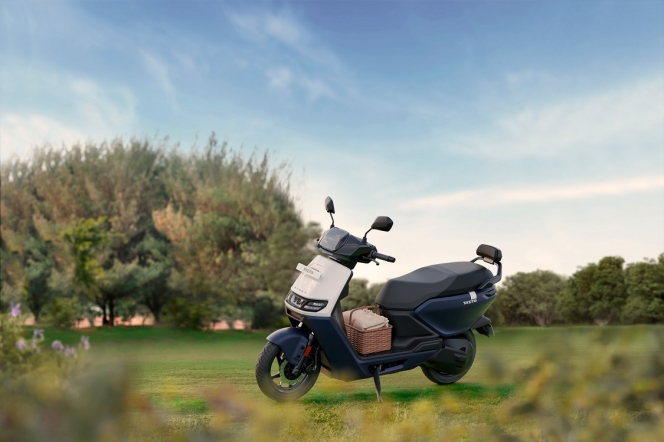
Bengaluru-based electric two-wheeler maker Ather Energy has announced three new initiatives Battery as a Service (BaaS), Assured Buyback programme and launched an Extended Comprehensive Warranty (ECW) to make owning the green vehicles more attractive.
These initiatives address key concerns for potential EV buyers, namely high upfront costs, uncertainty about resale value and warranty issues.
The BaaS model allows customers to purchase an electric scooter without the battery upfront, significantly reducing the initial cost. The price of the scooter is split into a 'shell' and a 'battery' component. Under this model, the Ather Rizta starts at INR 75,999 (ex-showroom Lucknow) and the 450 Series starts at INR 84,341 (ex-showroom Lucknow).
This represents a 30 percent reduction in the upfront cost for the Rizta. Customers then pay for the battery on a monthly usage basis, with plans starting as low as INR 1 per kilometre. The cost of the battery is recovered over three to four years. Additionally, BaaS customers get a year of free fast charging at Ather's network of over 3,300 fast chargers nationwide.
Ravneet S Phokela, Chief Business Officer, Ather Energy, said, "As the EV segment continues to grow in the country, we see customers with different needs and challenges entering the segment. To unlock the segment's true potential and accelerate growth, we've rolled out a slew of initiatives to cater to the different needs of our potential customers. With BaaS, ECW and Assured Buyback, we aim to address major barriers that exist for customers when purchasing a new EV scooter. As one of the leading players, we stay committed to making it easier for families to experience the benefits of EVs."
Building on a pilot programme, Ather has now extended its Assured Buyback programme to a wider customer base. The programme guarantees up to 60 percent of the scooter's value after three years and up to 50 percent after four years, based on the kilometres travelled. This initiative aims to provide clarity on the future value of the investment, addressing a common concern for buyers in a rapidly changing market.
Ather also launched its ECW, which covers the battery and 11 other critical components, including the motor, motor controller, dashboard and charger. The warranty is valid for up to five years or 60,000 kilometres, whichever comes first. This provides protection against potentially expensive component replacements and offers peace of mind for customers. The ECW is available to all AtherStack Pro customers.
Polestar 3 Sets Guinness World Record For Electric SUV Range On Single Charge
- By MT Bureau
- August 13, 2025
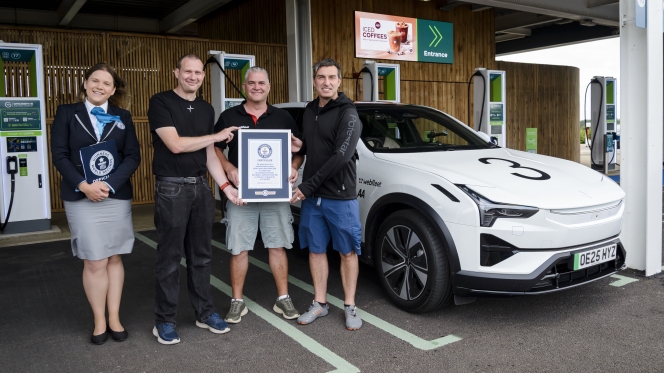
Polestar’s all-electric SUV, the Polestar 3, has set a new Guinness World Record for the longest distance travelled by an electric SUV on a single charge. The Long Range Single Motor model covered an impressive 581.3 miles (935.44 km), significantly surpassing its official WLTP range of 438 miles (706 km). Professional drivers Sam Clarke, Kevin Booker and Richard Parker meticulously optimised efficiency during the 22-hour, 57-minute test, achieving an energy consumption rate of 19.5 kWh per 100 miles (12.1 kWh/100 km).
Conducted under mixed weather conditions, including rain, the challenge followed strict protocols. Guinness World Records judge Paulina Sapinska oversaw the attempt, with Webfleet providing verified telematics data, including GPS tracking, battery levels and odometer readings. The unmodified Polestar 3 rode on standard 20-inch wheels with factory-fitted Michelin Pilot Sport 4 EV tyres.
Remarkably, the SUV still had 20 percent battery remaining when it reached its WLTP range and continued for an additional eight miles (12.87 km) after displaying zero percent charge. The drivers rotated every three hours to maintain focus, with the AA on standby for safety. The achievement highlights the Polestar 3’s real-world efficiency and endurance beyond laboratory estimates.
Matt Galvin, Polestar UK Managing Director, said, “While Kevin, Sam and Richard pushed the Polestar 3 to the boundaries of its range capability, it goes to show how battery range has improved exponentially over the past few years. For a large luxury SUV to go way beyond a London to Edinburgh distance is truly impressive. When this achievement is coupled together with real world independent tests such as Norway’s El Prix winter range test earlier in the year where the Polestar 3 Long Range Dual Motor won against 23 other electric vehicles, it goes to show: long distances are perfectly achievable with minimal fuss. Add to this rapid charging with up to 250 kW allowing a 10–80 percent charge in 30 minutes, the adage that ‘EVs can’t go far’ has been very much consigned to the history books.”
Driver Sam Clarke said: “Since we first started setting records, we have noticed how much more driving it is taking to achieve them! While we aim to push the car to the limits, the car is also pushing us to our limits. I am pleased to be setting the first electric SUV journey record, and to do it in such a capable EV like the Polestar 3 has been a real pleasure.”
Driver Kevin Booker said: “Setting this record alongside Sam and Richard is a great achievement – especially in a large SUV such as the Polestar 3. There’s always jeopardy, and our attempt could have been hampered by the adverse weather conditions and traffic we experienced – there was a lot of standing water during part of the day, meaning more resistance from the tyres and lower efficiency. But, finishing up on zero percent at nearly one o’clock in the morning knowing we’d beaten previous records was a fantastic feeling!”
Driver Richard Parker said: “After the rain subsided, we had a few more challenges on our hands including some interest from the local constabulary! When they realised our official attempt was ultra-efficiency, and they had wished us good luck – we were back on track and getting into our routine of driving shifts until a last-minute road closure near Melton Mowbray was an additional test for us to face. It was another proof point that the record isn’t just down to the driver but also the passenger – quick-thinking co-pilot navigation was just as vital as battery management for this attempt.”
- Euler Motors
- Hero MotoCorp
- Magenta Mobility
- Flipkart
- Amazon
- D-Mart
- Zomato
- ShadowFax
- DHL
- Saurav Kumar
- Maxson Lewis
Euler Motors And Magenta Mobility Clock 20 Million Green Kilometres
- By MT Bureau
- August 13, 2025
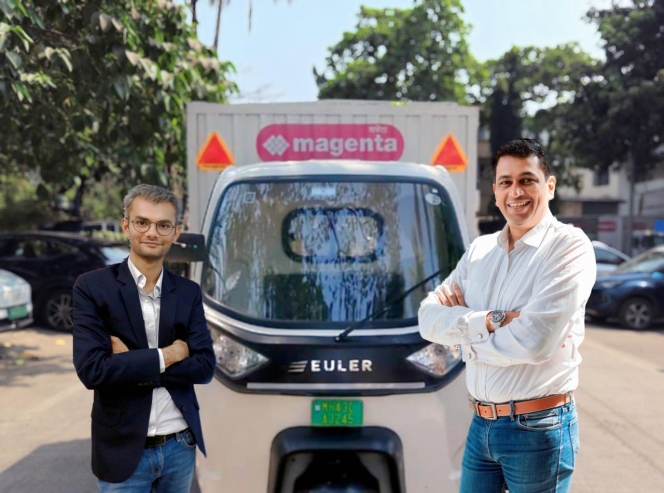
Euler Motors and Magenta Mobility have completed a collective 20 million kilometres in electric mobility operations. The collaboration, which has seen 733 Euler Motors electric vehicles used in more than 10 cities, has had a fleet uptime of over 97 percent.
The companies say the milestone shows that electric vehicles are a dependable part of the logistics grid in India. The fleet is used for a number of last-mile delivery applications.
The partnership has also cut 1,757 tonnes of carbon dioxide emissions and saved more than 665,000 litres of diesel. This environmental impact is equivalent to planting over 73,000 trees.
The collaboration has a presence in Mumbai, Delhi NCR, Bengaluru, Hyderabad and Chennai. Magenta provides services to clients like Flipkart, Amazon, D-Mart, Zomato, ShadowFax and DHL.
Saurav Kumar, Founder and CEO, Euler Motors, said, "This milestone is a testament to how far the EV ecosystem has come, from promise to performance. Together with Magenta Mobility, we've demonstrated that electric commercial fleets are not just future-ready, but present-day reliable, proving their worth on real roads, in real conditions, across multiple cities."
Euler Motors has provided on-site technicians, driver training and technology integrations to support the fleet.
Maxson Lewis, Managing Director and CEO, Magenta Mobility, said, "At Magenta Mobility, we’ve always believed that clean mobility must match, if not exceed, the performance of ICE vehicles to drive real adoption. Our partnership with Euler Motors has proven that conviction, on the ground, at scale, and across cities. With over 2 crore electric kilometres, industry-leading uptime, and measurable climate impact, we’re not just talking about the future of logistics, we’re delivering it.”
India's Auto Industry Charts A Biofuel-Powered Future
- By MT Bureau
- August 12, 2025
India’s leading automakers and government officials gathered at the 4th International Conference on World Biofuel Day to discuss accelerating the country's transition to a biofuel-driven economy. Hosted by the Society of Indian Automobile Manufacturers (SIAM) under its Jaivik Pahal (Bio Initiative) campaign, the event highlighted India's rapid progress in biofuel adoption and the collaborative efforts needed to further its clean mobility goals.
The conference's discussions were underscored by a significant achievement: India has already reached its target of 20 percent ethanol blending (E20), a goal originally set for 2030. Sanjeev Chopra, Secretary of the Department of Food and Public Distribution, credited the National Biofuel Policy of 2018 for this success, which expanded the types of feedstock that could be used for ethanol production.
Experts from around the world praised India's progress. Kenneth Felix Haczynski da Nobrega, the Ambassador of Brazil, noted that the success of a biofuel program relies not just on technology, but on a robust and predictable regulatory framework. He emphasised that biofuels are crucial for cleaner air, energy security and rural empowerment.
Looking ahead, the conference explored ways to move beyond E20. Niraj Shirgaokar, Managing Director of The Ugar Sugar Works, suggested gradually increasing the nationwide blend to E25, E27 and eventually E30. This sentiment was echoed by other industry leaders who stressed that new passenger vehicles are now fully E20 compliant, paving the way for higher blends.
Innovations and Challenges in the Biofuel Ecosystem
The conference also delved into the development of advanced biofuels and the importance of a sustainable supply chain. Leaders from the commercial vehicle sector, like R S Sachdeva of VE Commercial Vehicles, shared that they've been working to integrate biodiesel blending and biogas into their systems.
Meanwhile, Kamal Kishore Chatiwal, Managing Director of Indraprastha Gas, expressed optimism about biogas, stating that India has huge untapped potential if it can address challenges like feedstock aggregation and waste segregation. He believes that a 10 percent infusion of biogas in CNG is achievable by 2030.
A key concern raised was the need for a reliable feedstock supply. Aswani Srivastava, Joint Secretary of the Government of India, said that while India has sufficient capacity to meet its E20 goals, ongoing efforts are focused on developing more water-efficient crops, like sweet sorghum, to ensure long-term sustainability.
Prashant K Banerjee, Executive Director of SIAM, stated, “We can make biofuel economy not just an aspiration, but India's global identity through innovation and collaboration.”


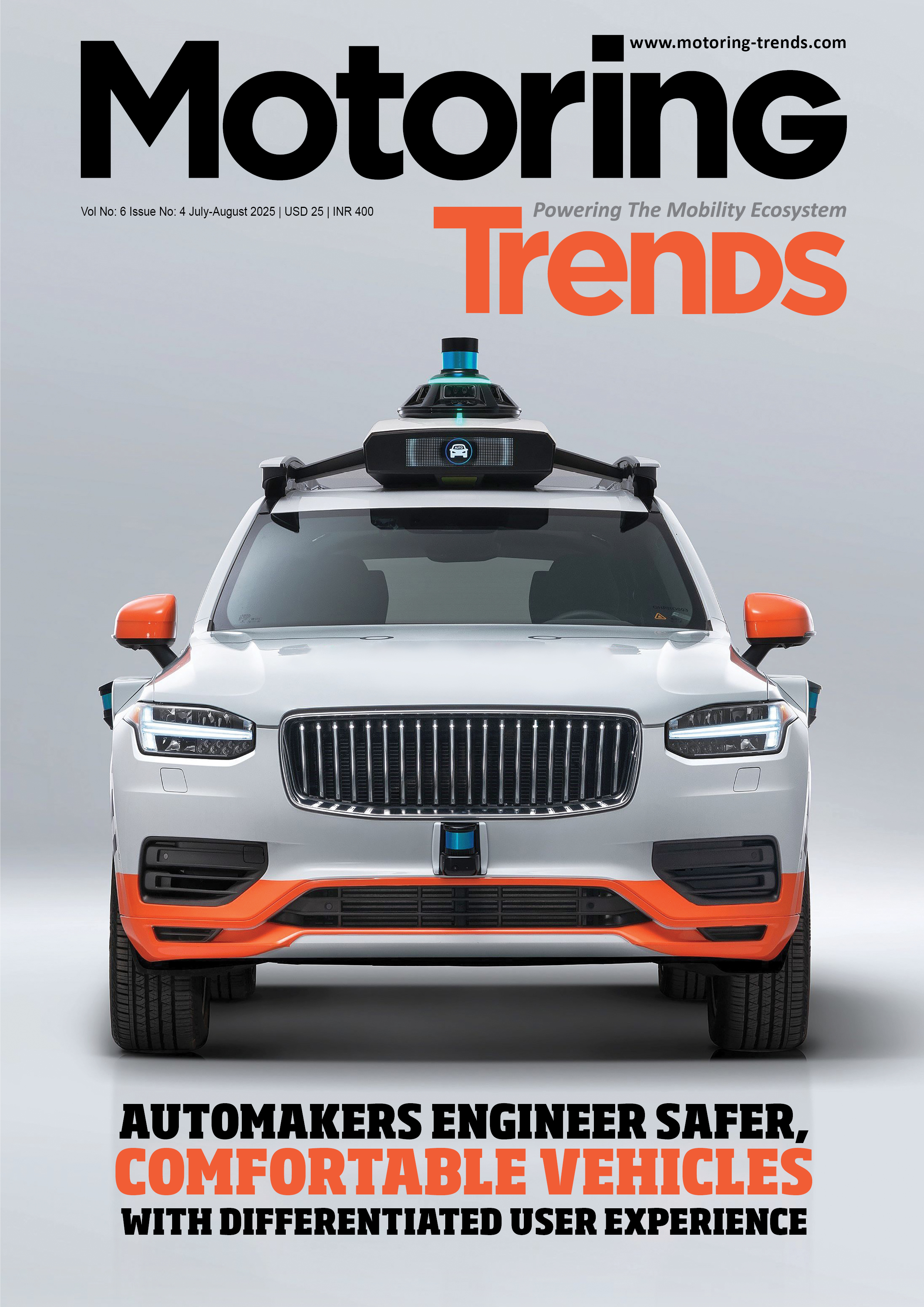
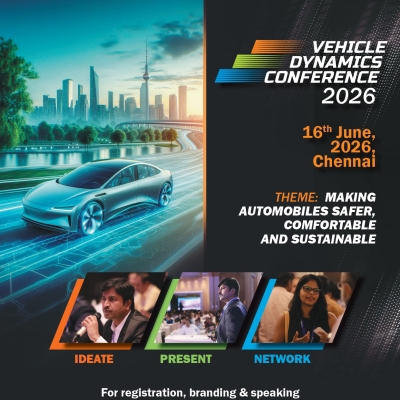

Comments (0)
ADD COMMENT